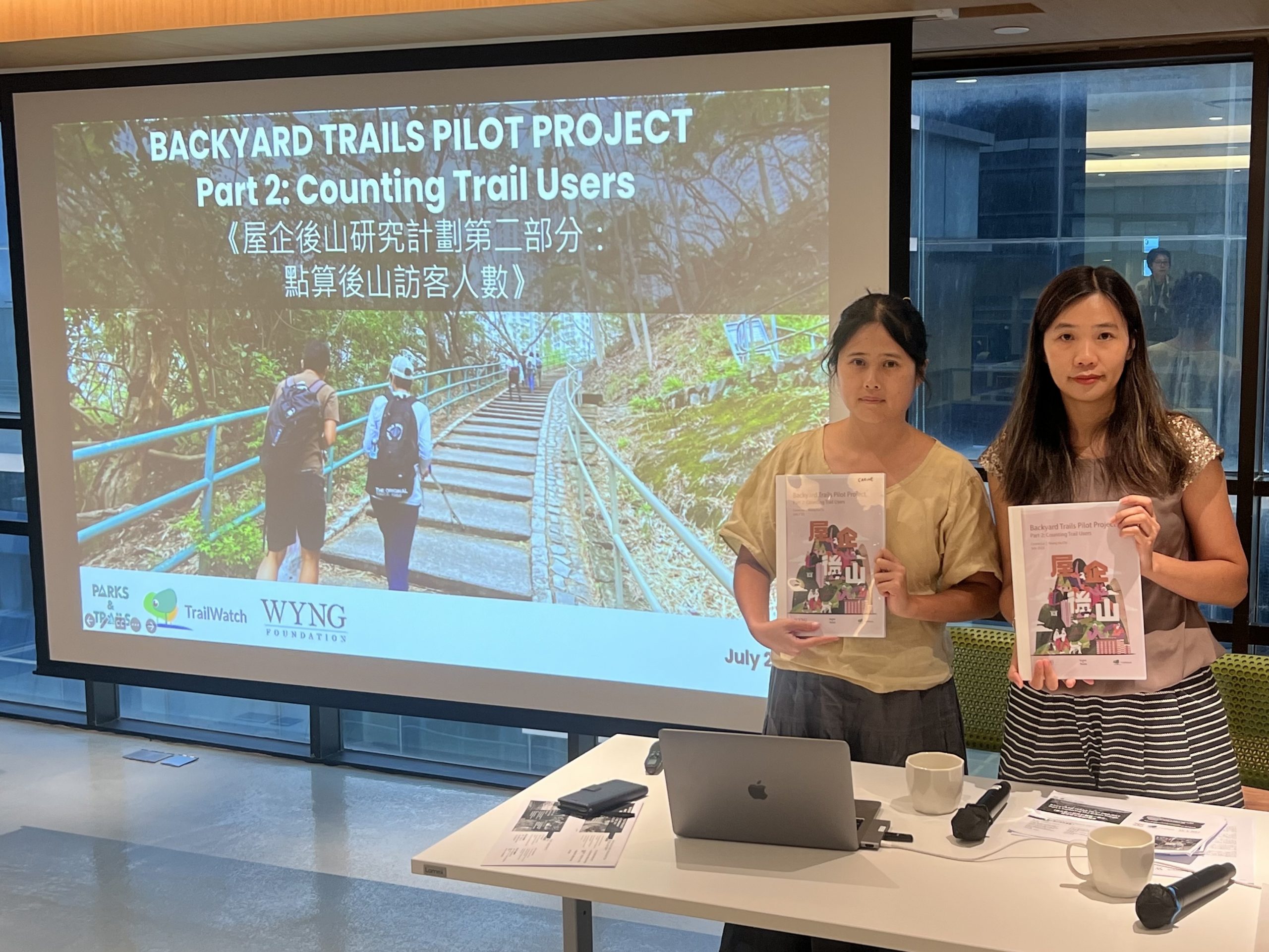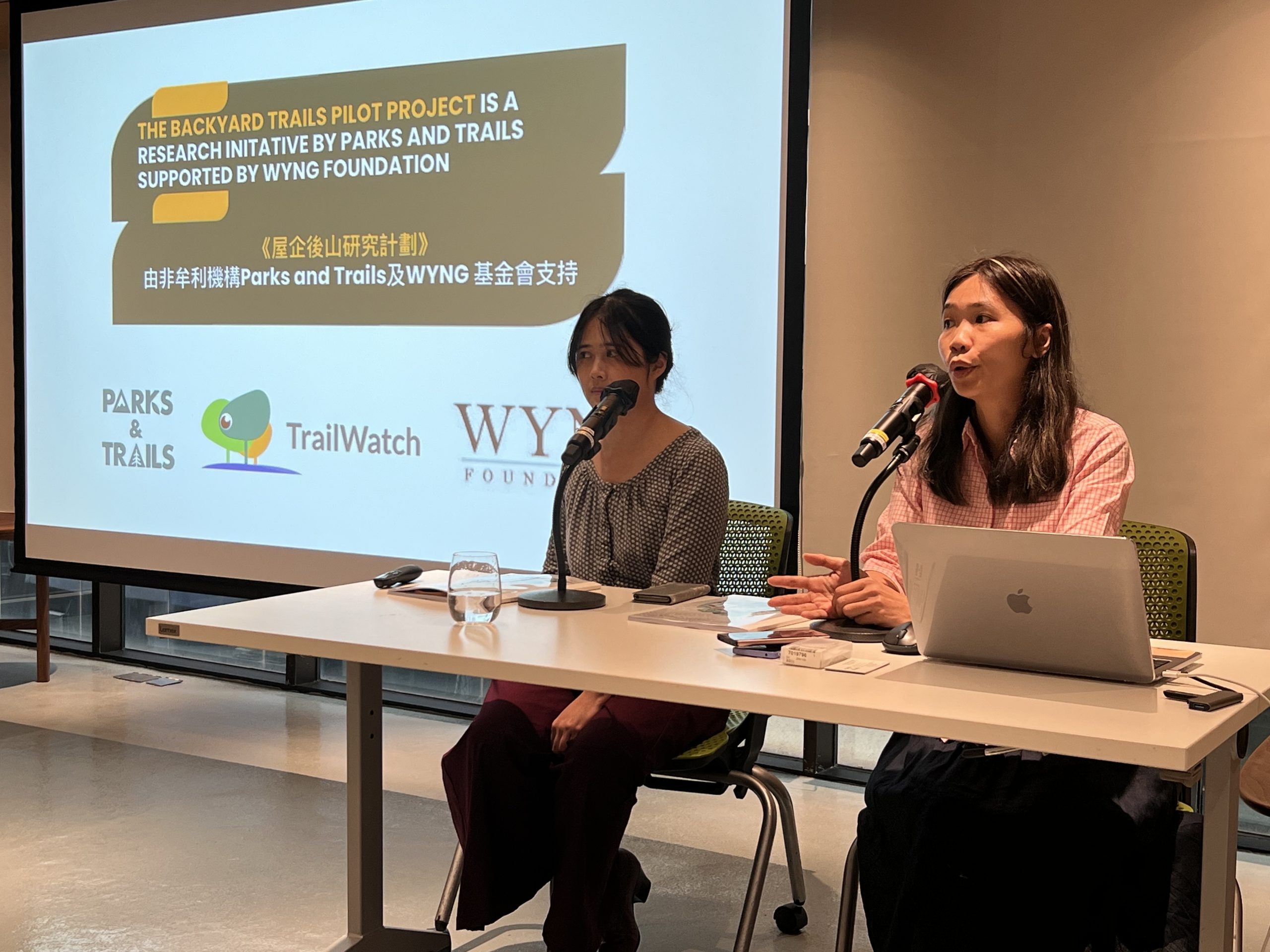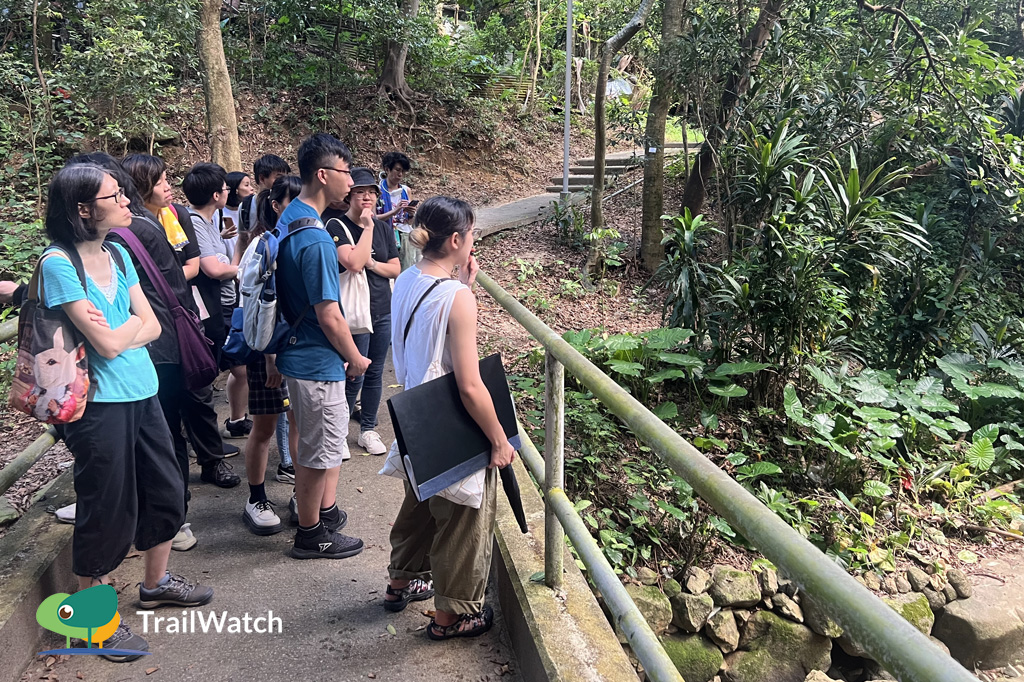Today Parks and Trails and WYNG Foundation released the report of “Backyard Trails Pilot Project Part 2: Counting Trail Users”, a preliminary quantitative analysis of the recreational value of ten selected backyard trails (Table 1). Pedestrian flow statistics were collected on those trails so as to quantify actual trail usage and observe the ways in which trail use changes throughout the day, over the week, and through different seasons. The result helps to demonstrate the value of backyard trails to the community and promote more care and attention to their planning, management, and preservation. Most backyard trails are located on green belt land, but not administered as country parks. They are Hong Kong’s valuable recreational and natural assets. However, not much research has been done on how many people use these trails and their typical usage habits. The research team, therefore, selected ten trails in the city with custom-build battery operated infrared people counting sensors installed next to the walking paths for 6 to 12 days at each location in July–August 2022 and December 2022–February 2023. The sensors counted the number of people (“human presences”) passing by and logged whether they were passing from left to right, or right to left.
Carine Lai, Senior Project Manager of WYNG Foundation said, “About half the trails that we studied including Duckling Hill, Hammer Hill, Wu Tip Shan, Woh Chai Shan, Shum Wan Shan and Ping Shan, appeared to be primarily used by nearby residents. We detected high rates of usership throughout the week and in both summer and winter. While they attracted more trail users on the weekends, the difference was not very dramatic – usually around 10%-30% more people. The hourly foot traffic also fits ‘morning walker’ activity patterns, with peak times usually occurring at around 9 a.m.”
Many backyard trails serve mainly neighbourhood users. Among the trails, Wu Tip Shan is the best-used with over 1,200 trail users on weekdays and over 1,500 on weekends. The median backyard trail saw roughly 400-500 trail users a day on weekdays and 700-800 trail users on weekends, which are roughly comparable to attendance at gazetted beaches per day during lifeguard season in 2021-2022 according to the Leisure and Cultural Services Department (LCSD). It should be noted that the actual trail use is expected to be greater as most of the trail networks are complicated and the research team lacked the resources to monitor every single trail entrance and exit. Trail users seem to spend about 1-2 hours on most backyard trails but the data show that neighbourhood trail users do not only visit in the morning. In summer, most “morning walkers” actually start trail activity at around 5:00–6:00 a.m. and finish at about 9:00 a.m. However, this is often followed by another slightly smaller peak during the late afternoon at around 4:00-6:00 p.m. On the contrary, trail use is more evenly spread out throughout the day in winter. Meanwhile, while the conventional wisdom is that Hong Kong’s hiking season runs from October to May, similar numbers of users are found during summer and winter, representing most backyard trails well-used year-round. People adjusted the time on the day of their visits, going early in the morning and late in the afternoon in July and August. As expected, rain decreases backyard trail usage. Light rain (2-4mm a day) appears to decrease trail use by around 10%-15%. Moderate rain (5-15mm) seems to reduce trail use by around 20%-30%. In heavy rain (30mm or more), trail use decreases by about 45%-55%. However, even during very poor weather conditions — amber rainstorm warnings, thunderstorm warnings, T1 and T3 signals — trail activity was still at around 45% of the normal level. In other words, there are some users who are not put off by severe weather. While backyard trails had more trail users on the weekends than on weekdays, the difference at many trails was not large. One typical example is Woh Chai Shan, which attracted almost the same number of people on weekdays as on weekends. This points to most backyard trails serving as neighbourhood green spaces with a consistent base of local users. Some backyard trails such as Fu Yung Shan, To Fung Shan and Mount Davis belong to atypical trails as the trail use patterns were complicated by mixed land uses including places of worship and village houses, or with poorer accessibility, etc. and therefore saw larger swings in visitorship from weekdays to weekends and from summer to winter.
Sum Kwong, Partnership and Communications Head of Parks and Trails said, “The result provides preliminary quantitative evidence that backyard trails, most of which are located on green belt land, are well-used by communities, hosting several hundred to well over a thousand trail users a day, throughout the week and year-round. Green belts are much more than leftover spaces. Since they are frequently undervalued and overlooked with the lack of cohesive planning and management by the government, this has allowed the backyard trails to develop their unique character, yet with a number of threats from inconsiderate usage and excessive concretisation to intense development pressures.
She suggested a close involvement of users and community groups in backyard trails planning and management decisions. A collaborative approach involving non-profits and community volunteers can also help to address management and maintenance issues in a more sustainable way.







